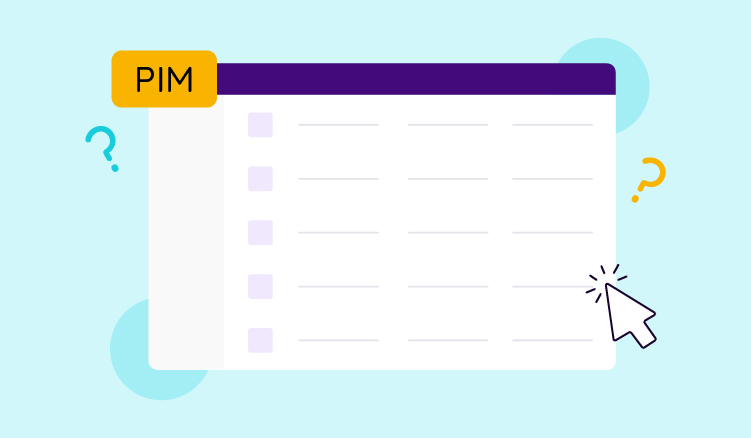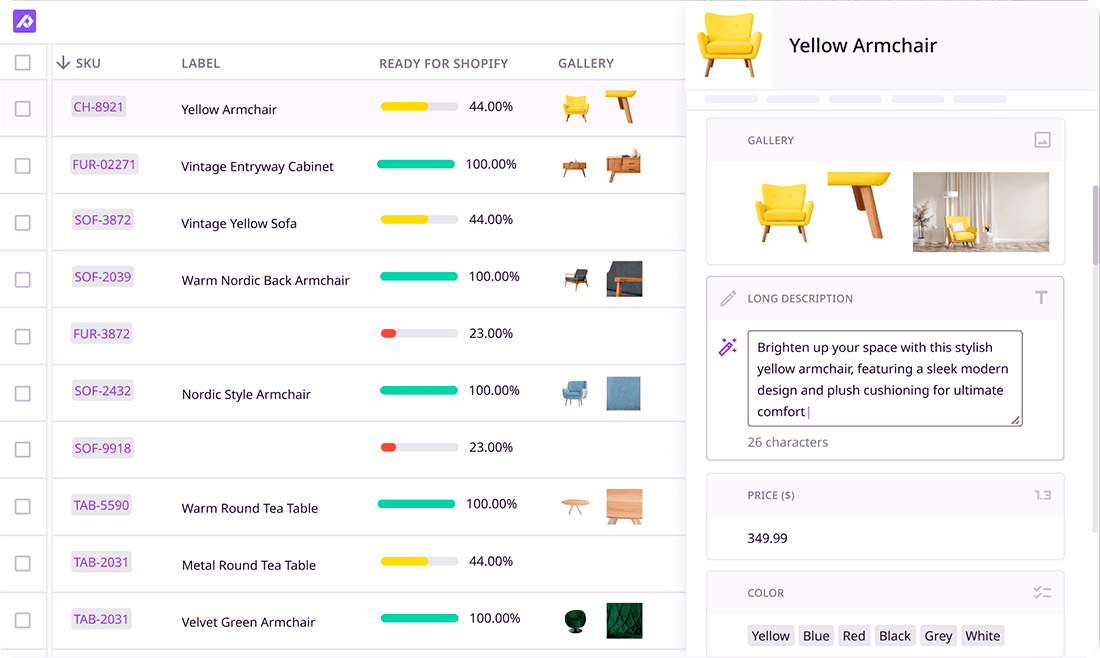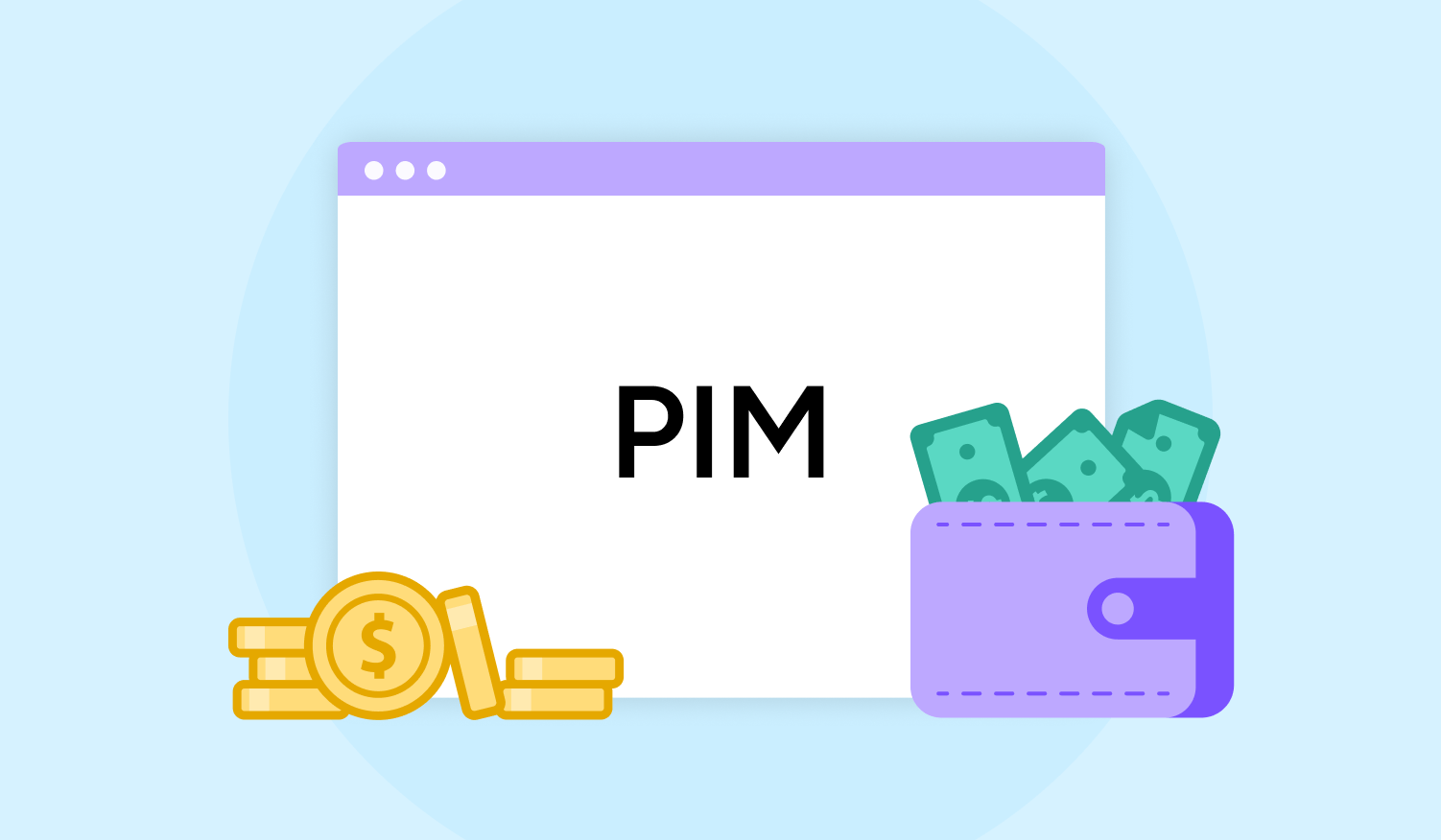
Keep the good stuff coming
Subscribe to our blog newsletter and get monthly content that helps you manage product data smarter.
No spam. Just real value.
If you work in ecommerce and you’ve landed on this page, it’s safe to assume that you already know how time-consuming (and oftentimes frustrating) managing product information is. I’d be preaching to the choir if I started explaining how complex it can be getting hundreds or even thousands of products onto your different sales channels.
So let’s just cut to the chase and dive into why you’re really here—which is to figure out how you can use PIM to make ecommerce easier. Let’s take a look at what PIM is, why you need it in ecommerce, how it can help you, how it works, and how you can find the right PIM for your needs.
Understanding PIM
At its core, Product Information Management (PIM) software is a system designed to centralize, enrich, and optimize your product information—all while helping you get your products information and media to your different sales and ecommerce channels. Not only that but this system helps make sure that your product data is accurate, consistent, and engaging across all platforms.

Think of PIM as the beating heart of your product data, pumping vital information to where it needs to go, making sure that your customers have all the information they need to make informed purchasing decisions.
How PIM works: the basics
As I just mentioned, a PIM system works by centralizing, enriching, optimizing, and distributing your product information. To understand what this truly means, let’s break this down a little bit more:
- Centralize: this allows you to put all your product descriptions, specifications, details, photos and more in one place.
- Enrich: a good PIM system has features that help you identify any errors or missing information so that you can go in and make sure your product’s have enriched product data.
- Optimize: there are many ways a PIM system can help you optimize for each of your ecommerce channels. One example is bulk editing specific keywords to rank on Amazon.
- Distribute: PIM software usually has the capability of being able to help send your product information to wherever you sell. Different PIMs have different processes and features for this, so be sure to check out each possible solution with regards to your particular sales channels.

Why PIM is a must-have in ecommerce
With over 26.5 million online stores globally, there’s more than enough competition for you to need to do everything you can to stand out and convert your browsers into buyers. One of the key ways you can do this is by making sure your product information, photos, and even videos if you have them are up-to-date, accurate, detailed, and compelling. Considering that 85% of shoppers said that product information and pictures are important to them when deciding which brand to buy from, you're going to want to make sure that you have this set.
Your customers want to know everything about the products they are going to buy—from the specific features, materials, and dimensions of a product, to how it can benefit their lives. So, where does a PIM tool in ecommerce come into play? Here are a few ways that PIM software can help you give what your customers want (and need) when looking to buy your products.
Consistency across all your sales channels
With PIM, you can make sure that your product information is uniform across all platforms, from your own website to third-party retailers and social media. And don’t worry if you have stores in multiple languages or with localized content—a good PIM system can handle that too.
The challenge of doing this manually without a PIM mainly comes from the requirements each channel has. This becomes tricky because you need to pull the same data about your products and send it over while matching the requirements and format of each channel. That means you'd better make sure you're taking the time to update all of your data in all of your spreadsheets for all of your ecommerce channels... OR you could just get a PIM tool to do that for you.
Better productivity and efficiency
Manually managing product information across multiple channels can be a time-consuming and error-prone process. PIM speeds up this process, allowing you to update information in one place and see it reflected everywhere, saving you time and reducing errors.
Not only that, but PIM makes collaboration easy. You can give the right access to whoever needs it using access control. Your team can jump in the PIM system and update or work with whatever data they need at any time.
This efficiency allows teams to focus on the things that really matter—like how to grow your business or how to engage your customers better.
Improved Customer Experience
Detailed, accurate product descriptions and specifications help customers make informed decisions. Not only that, but product information and the photos and videos that come along with it are what lay the foundation for your customers’ experience with your products. Serving the right information and media are key to a successful sale.
A PIM system can help you with this. As we’ve already discussed, PIM software helps makes sure you're sending out accurate and up-to-date information, and it also helps support high-quality images and videos for you to send out.
Scalability
As your business grows, so does your product range and the complexity of managing it. A PIM system scales with you, handling thousands of SKUs without breaking a sweat, making sure your product information management doesn't hinder your business’ growth.
Not all PIM systems are alike though, so make sure you take a look at what each PIM provider offers and if it fits the need of your business.
Faster time-to-market
With PIM, launching new products or expanding into new markets becomes significantly faster. Since all necessary product information is readily available and easily accessible, you can quickly adapt it for and distribute it across all your different sales channels.
Our customers have reported that they are able to get their products to market six times faster with our PIM compared to managing their products just with spreadsheets. This means they get their products out before their competition and are always a step ahead.
Choosing the right ecommerce solution for you
Selecting the right PIM solution for your business depends on various factors, including the size of your product catalog, the number of channels you operate in, and the level of customization you need. Look for a PIM system that integrates seamlessly with your existing ecommerce platform, offers a user-friendly interface, and provides robust data management and enrichment features.
Here are some main features you should consider when looking for a PIM system:
- Centralized, media-neutral data management
- High levels of flexibility and customization
- Management, maintenance, transfer, and output of product information
- Management of communication, purchasing, and production data
- Cross-media use of stored product information
- Support for content supply chain system workflows, and printed and online publications
- Automated generation of online and offline target formats
- Integration with ERP and your other systems and databases
- Media, digital asset, and translation management
- AI capabilities for content generation
There are a lot of factors to consider when buying PIM software for your ecommerce business, so make sure you evaluate your needs and compare systems accordingly.
If you need help during your PIM search, check out our free PIM buyer’s guide down below. It’s full of tips and comparisons to help you find what you need.
So, whether you're a small business looking to expand your online presence or a large enterprise managing thousands of SKUs, embracing an ecommerce PIM can transform your digital strategy and help you stay ahead of your competition.
Frequently Asked Questions
PIM in ecommerce refers to Product Information Management, a system that centralizes, manages, and enriches product information, ensuring consistent, accurate data across all ecommerce channels and platforms.
A PIM system manages product information centrally, ensuring data consistency across all channels, whereas a webshop (or ecommerce platform) is where products are displayed and sold to customers. PIM feeds the webshop with accurate product data.
No, Shopify is not a PIM system. It's an ecommerce platform that enables businesses to create online stores. While Shopify can manage product listings, a PIM provides more comprehensive tools for managing product information across multiple platforms.

Bergen Palmer
Bergen Palmer is a content marketer at Plytix, where she writes all about product information and ecommerce. With a background in ecommerce SaaS and content strategy, she focuses on creating clear, trustworthy content that helps brands work better with their product data.

What if your product data actually worked for you?
We’ll show you how Plytix helps you stop fixing data—and start using it.
Related posts
Keep the good stuff coming
Subscribe to our blog newsletter and get monthly content that helps you manage product data smarter.
No spam. Just real value.






Think others should see this?
Go ahead and share it.